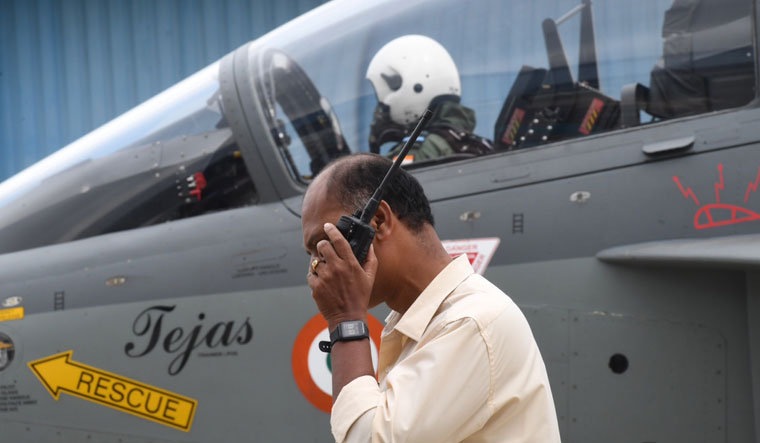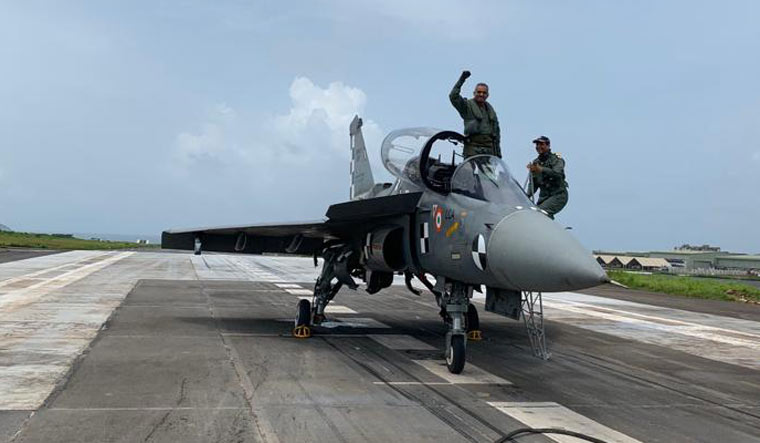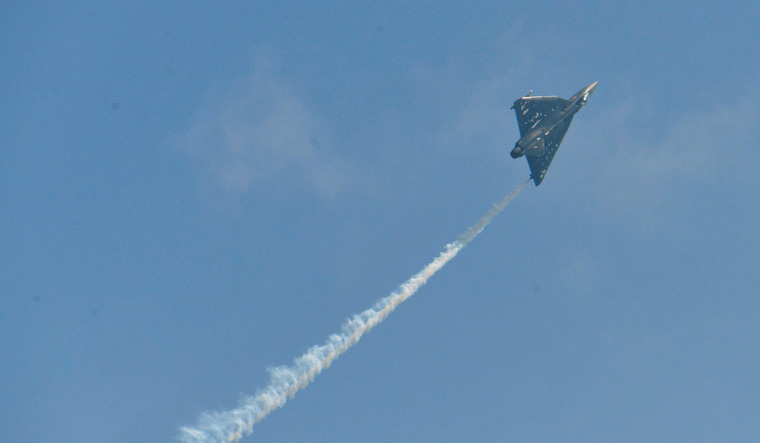At 10:00 on January 4, 2001, Wing Commander Rajiv Kothiyal took the maiden flight of India's fighter jet Light Combat Aircraft (LCA). In 2003, Prime Minister Atal Bihari Vajpayee christened the fighter "Tejas". Now with two squadrons, the Tejas has become an important asset in the Indian Air Force's inventory along with frontline jets like the Sukhoi-30 MKIs, Mirage-2000s, MiG-29s and the newly inducted Rafales. And, the IAF plans to have more of them with an additional 83 of the Mark-1 version in addition to its naval version.
It took 18 years to test the prototype of the aircraft. In 1983, DRDO had obtained permission to initiate a programme to design and develop a Light Combat Aircraft. The move was taken in anticipation of the life expiry of the MiG-21 fleet and the government allocated Rs 5.75 billion (equivalent to Rs 63 billion or $880 million in 2019) for the LCA programme.
In 1985, the then IAF Chief Air Chief Marshal Idris Hassan Latif supported the LCA programme and submitted Air Staff Requirements (ASR) for the fighter jet.
DRDO Chief Dr G Satheesh Reddy, in an interview to the WEEK, had said that there are few nations in the world that have successfully made a fighter aircraft of their own. "We are one of them. It has taken about three decades of struggle," he added.

The Tejas is a single-engine, delta wing, multirole lightweight fighter- designed by the Aeronautical Development Agency (ADA) and Hindustan Aeronautics Limited (HAL).
The fourth-generation aircraft is designed to carry a veritable plethora of air-to-air, air-to-surface, precision-guided and standoff weaponry. It can travel at supersonic speeds at all altitudes and can carry a payload of 3,500 kg, with a service ceiling of 15km. It is best suited for air combat and offensive air support.
Armaments of both Russian and European origin can be integrated with the platform.
Speaking on the occasion of 20 years since the LCA's first flight, HAL CMD R. Madhavan told THE WEEK that the project is progressing very well, with an augmented production capacity of 10-12 LCAs per year with exclusive production facilities in Bangalore.
"We have also developed partners for the supply of major structural assemblies. A new facility spread across 35 acres and with a built-up area of over 34,000 square metres is being made ready for production of structural assemblies of the advanced variant of Tejas—LCA Mk1A. This facility will be in full-fledged operation from FY 2021-22 onwards," Madhavan said, adding that HAL will be able to produce 16 aircraft per year from 2022-23 onwards to match the order for 83 LCAs.
LCA Mk1A is an advanced version of the LCA Mk1 with four major capabilities over the current variant of LCA. These improvements are planned in operational roles, enhancing the combat ability and maintainability improvements through the incorporation of an AESA Radar, EW suite and BVR missile capabilities, an official said.
LCA Mk1A will have the inbuilt capability to fire BVR missiles such as the Derby missile, with the current Tejas already proving such capability. The indigenously developed BVR missile (ASTRA Mk1) has been identified to be integrated on Mk1A, which will be a weapon of choice for the IAF. This versatile weapon will give an edge to LCA Tejas over its contemporaries in BVR warfare.
Tejas Mk-II is a medium-weight fighter aircraft, which will replace the Mirage fighters. The preliminary design phase has been completed and detailed design work is in progress. It will have a higher-thrust engine compared with the LCA Mk-I.
Speaking on the Tejas Mk-II, an official said that it will be a medium-weight fighter (MWF) and that its design is ready. The current Tejas has a maximum takeoff weight of 13.5 tonnes while the MWF is in the next class and is targeted to have a maximum takeoff weight of around 17.5 tonnes. The Indian Air Force will be ordering these aircraft in large numbers to meet its requirements. The first flight of the Mk-II will happen in 2022 and will take another 5-6 years to get into production. By that time, the Mirage-2000 fighters will complete their lifespan and the LCA Mk-II should get into production.
And to fill the gap in the IAF's combat fleet, Tejas is expected to play an important role in the medium category.
 The naval version of the Tejas
The naval version of the Tejas
On September 13, 2019, the naval version of Tejas LCA achieved a successful "arrested landing" at the shore-based Test Facility of INS Hansa in Goa, achieved a milestone.
Indian Navy had hailed this day as a "golden letter day" in its history—even after it first rejected the naval version of LCA. Eventually in January last year, LCA Navy made a maiden take off from INS Vikramaditya.





